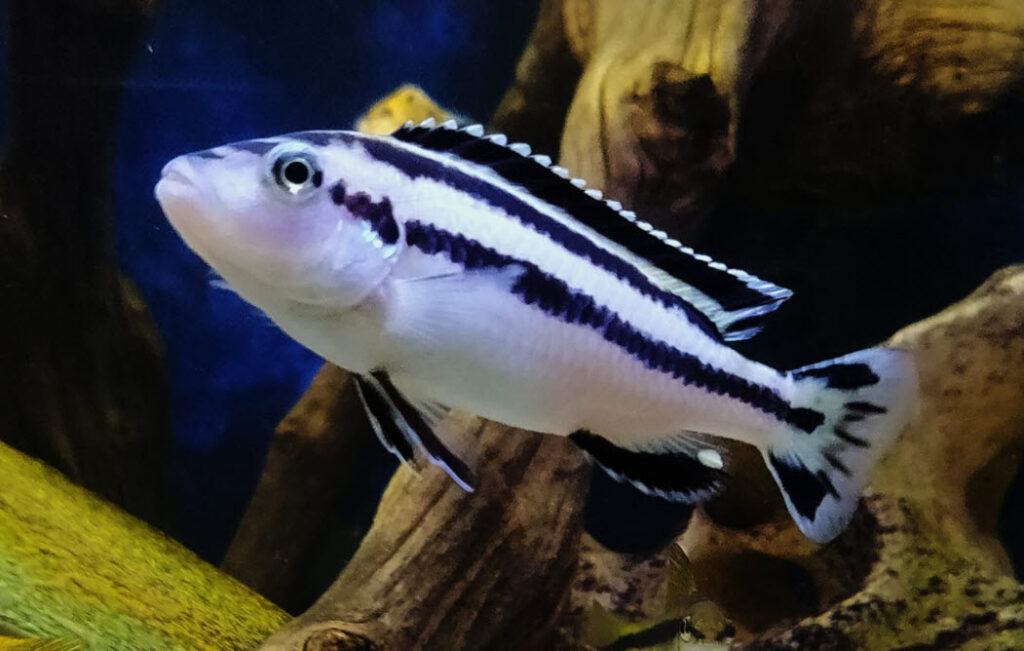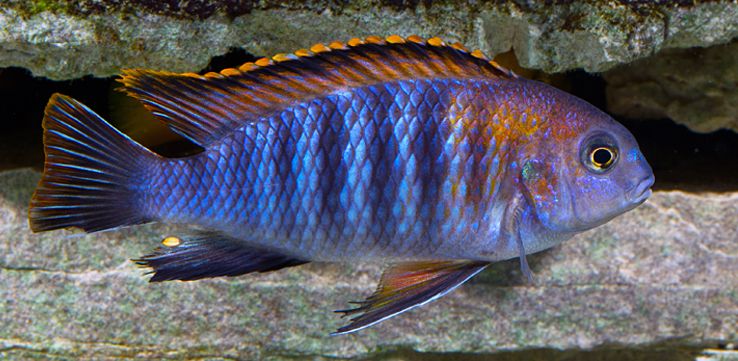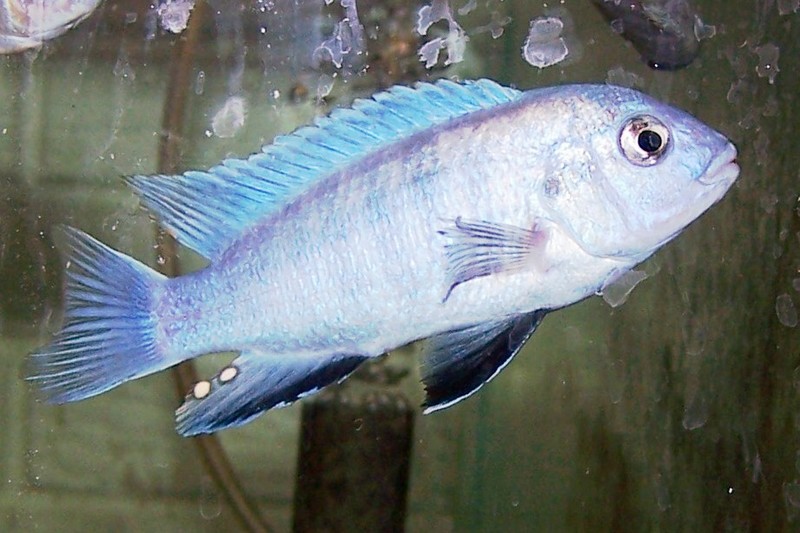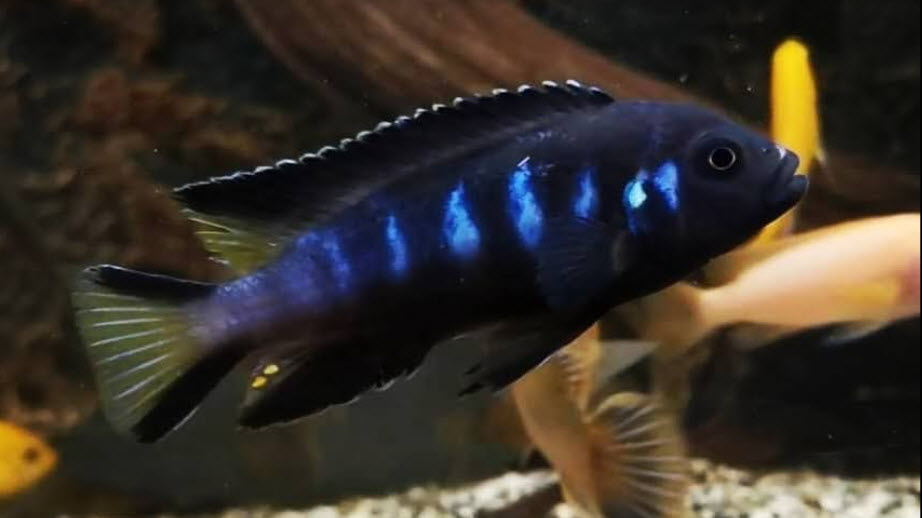By the simplified version there are many types of filters used for the tropical aquarium which can be scored by approximate number of three inch (7,5 cm) fish the filter will support, media capacity, ease of cleaning, cost, and appearance:
| Filter | # van 3″ (7,5 cm) vis kristalhelder* | Media capaciteit kubieke inches | Media capaciteit kubieke centimeter | Kosten | Uiterlijk | Lek potentieel |
|---|---|---|---|---|---|---|
| Cartridge intern filter | 0 | 4-10 | 65 – 165 | € | Redelijk | Geen |
| Cartridge Hang-on-Back filter | 0 | 5-15 | 100 – 245 | € | Super goed | Vaak voorkomende |
| Airlift sponsfilter | 2 – 8 | 60-200 | 1.000 – 3.250 | € | Slecht | Geen |
| Sponsfilter met pomp | 3 – 10 | 60-200 | 1.000 – 3.250 | € | Slecht | Geen |
| Mattenfilter | 5 – 8 | 100-160 | 1.650 – 2.600 | € | Slecht | Geen |
| Bottom-to-top Hang-on-back filter | 10 – 20 | 180-260 | 3.000 – 4.250 | €€ | Super goed | Vaak voorkomende |
| Ondergrindfilter op lucht | 15 – 30 | 1000-2000 | 16.000 – 32.000 | € | Goed | Geen |
| Ondergrindfilter met pomp | 20 – 40 | 1000-2000 | 16.000 – 32.000 | € | Goed | Geen |
| Potfilter | 25 – 50 | 500-1000 | 8.200 – 16.400 | €€€ | Super goed | Vaak voorkomende |
| Statische bioloog | 100 – 300 | 2000-6000 | 32.000 – 100.000 | €€€€ ** | Super goed | Sommige |
| Wervelbed bioloog | 200 – 600 | 2000-6000 | 32.000 – 100.000 | €€€€ ** | Super goed | Sommige |
| * Uitgaande van een goed filtermedium (schuim, plastic potscrubbers of K1) ** Een doe-het-zelf bioloog kan vrij goedkoop worden gemaakt |
||||||
*# of 3″ (7,5 cm) Fish refers to the number of three inch fish that can be given crystal clear water with this filter. Ammonia oxidation is much easier than crystal clear water so for ammonia oxidation multiply the numbers by ten to twenty. Note this chart is a very very gross approximation. Also this review assumes a typical 29 to 40 gallon (100 to 150 liter) tank with correspondingly sized filters. And it assumes that an overflow siphon is not visually objectionable while a dirty sponge sitting in a tank is objectionable.

Nu zijn filters niet zo eenvoudig als de bovenstaande tabel suggereert. Er zijn veel soorten filters en er moet rekening worden gehouden met de media waarmee ze zijn geladen. Er zijn ook veel meer overwegingen voor een betere selectie van filter/filtermedia. We hebben de bovenstaande vereenvoudigde beoordeling overgenomen en uitgebreid naar een veel uitgebreidere kijk op combinaties van filters en filtermedia. Dit is lang en saai, maar velen zijn geïnteresseerd, dus hier gaat het.
Het beoordelen van de meeste filter-/filtermedia-mogelijkheden van één tot tien, waarbij tien de beste is, geeft de volgende tabellen voor twintig verschillende filter-/filtermedia-combinaties:
| Parameter | Airstone foam/sponge | Small powerhead foam internal canister | Powerhead foam/sponge |
|---|---|---|---|
| Kosten | 10 | 8 | 8 |
| Biofiltratie | 6 | 2 | 8 |
| Aesthetics | 0 | 5 | 0 |
| Mechanische filtratie | 2 | 0 | 4 |
| Beluchting | 4 | 2 | 2 |
| Fry safety | 10 | 10 | 10 |
| Power consumption | 10 | 7 | 7 |
| Water clarity | 1 | 3 | 6 |
| Leakage potential | 10 | 10 | 10 |
| Onderhoud | 10 | 3 | 6 |
| TOTAAL | 63 | 50 | 61 |
| Parameter | Hang-on-back biowheel with undergravel | Powerhead undergravel | Airstone undergravel |
|---|---|---|---|
| Kosten | 6 | 8 | 8 |
| Biofiltratie | 8 | 8 | 6 |
| Aesthetics | 7 | 7 | 5 |
| Mechanische filtratie | 10 | 0 | 0 |
| Beluchting | 5 | 6 | 5 |
| Fry safety | 1* | 8 | 10 |
| Power consumption | 4 | 6 | 10 |
| Water clarity | 5 | 8 | 5 |
| Leakage potential | 6 | 10 | 10 |
| Onderhoud | 10 | 10 | 10 |
| TOTAAL | 62 | 71 | 66 |
| Parameter | Canister cheap filled with K1 media, pot scrubbers or foam | Canister cheap filled with ceramic rings, bioballs or Matrix | FX6 filled with K1 media or foam | FX6 filled with ceramic rings and bioballs |
|---|---|---|---|---|
| Kosten | 4 | 3 | 1 | 1 |
| Biofiltratie | 6 | 1 | 10 | 6 |
| Aesthetics | 10 | 10 | 10 | 10 |
| Mechanische filtratie | 0 | 0 | 0 | 0 |
| Beluchting | 7 | 2 | 7 | 7 |
| Fry safety | 1* | 1* | 1* | 1* |
| Power consumption | 2 | 1 | 3 | 3 |
| Water clarity | 10 | 1 | 10 | 7 |
| Leakage potential | 0 | 1 | 0 | 0 |
| Onderhoud | 5 | 2 | 5 | 5 |
| TOTAAL | 45 | 22 | 47 | 40 |
| Parameter | Sump K1 fluidized bed | Sump sizable hydroponic setup | Sump static filled with K1 media or foam | Sump static filled with ceramic rings or matrix | Sump static waste basket pot scubbers | Sump static wet/dry | Sump static filled with bioballs trickle |
|---|---|---|---|---|---|---|---|
| Kosten | 1 | 3 | 1 | 1 | 10 | 1 | 1 |
| Biofiltratie | 10 | 8 | 8 | 4 | 8 | 3 | 4 |
| Aesthetics | 10 | 10 | 10 | 10 | 10 | 10 | 10 |
| Mechanische filtratie | 10 | 10 | 9 | 10 | 9 | 10 | 10 |
| Beluchting | 10 | 10 | 7 | 7 | 7 | 10 | 10 |
| Fry safety | 1* | 1* | 1* | 1* | 1* | 1* | 1* |
| Power consumption | 1 | 5 | 1 | 1 | 1 | 1 | 1 |
| Water clarity | 10 | 5 | 10 | 3 | 7 | 6 | 10 |
| Leakage potential | 8 | 2 | 8 | 8 | 8 | 8 | 3 |
| Onderhoud | 10 | 10 | 8 | 8 | 8 | 4 | 10 |
| TOTAAL | 71 | 64 | 63 | 53 | 69 | 54 | 60 |
| Parameter | Hang-on-back bottom to top flow and foam media | Hang-on-back bottom to top flow and ceramic media | Hang-on-back cartridge |
|---|---|---|---|
| Kosten | 5 | 5 | 8 |
| Biofiltratie | 3 | 1 | 0 |
| Aesthetics | 7 | 7 | 7 |
| Mechanische filtratie | 4 | 2 | 10 |
| Beluchting | 4 | 4 | 1 |
| Fry safety | 1* | 1* | 1* |
| Power consumption | 5 | 5 | 5 |
| Water clarity | 5 | 1 | 0 |
| Leakage potential | 6 | 6 | 6 |
| Onderhoud | 3 | 2 | 10 |
| TOTAAL | 42 | 34 | 48 |
* These numbers can be taken to 10 by the simple addition of foam prefilters.
The filter options in pink have low biofiltration scores. Since biofiltration is the most important variable in most aquariums these filters are not the best choice for most aquariums in OUR OPINION.
Merk op dat biofiltratie twee verschillende functies heeft. De eerste functie is het oxideren van ammoniak tot nitraat. De tweede functie is het geven van gezond kristalhelder, schoon water. Uit tests blijkt dat kristalhelder water twintig keer zoveel filtermedia nodig heeft als ammoniakoxidatie. De roze filters geven een goede ammoniakoxidatie maar geven geen kristalhelder water.

Merk op dat al deze nummers uitgaan van relatief standaardopstellingen. Een standaard wervelbedopvangbak heeft mechanische filtersokken. Dus de mechanische filtratie is uitstekend. Ik gebruik persoonlijk geen sokken of pinkkussentjes in mijn gefluïdiseerde opvangbakken, dus mijn opvangbakken zouden een nul hebben voor mechanische filtratie.
Deze beoordeling geeft ook weer dat schuim van 20 en 30 ppi een geweldig biofilter is, maar geen goed mechanisch filter. Mechanische filtratie wordt alleen geleverd door filtersokken, polyfill, polyester patroonsokken, polyester pads (Pinkie Pads) of 40 ppi schuim. Dus de kleine interne cartridge met 30 ppi schuim is een zeer slecht mechanisch filter. Omdat de hoeveelheid schuim in deze kleine units erg klein is, doen ze ook niet erg goed aan biofiltratie.
Om deze beoordelingen te begrijpen, moet u de onderstaande hoofdstukken over elk type filter lezen. En begrijp dat iedereen deze attributen anders zal beoordelen. Deze beoordelingen zijn gewoon de mening van de auteur, iets wat ik normaal gesproken vermijd, maar er is geen manier om alle attributen te testen. Alleen de biofiltratie is gebaseerd op testen.

Het "beste" filter
Het "beste" filter is een wervelbed-sumpfilter met een score van 71. Dit is het meest voorkomende type filter dat wordt aangetroffen in grote, op winst gerichte recirculerende aquacultuursystemen (RAS), zoals tilapia of meervalkweek. In deze systemen noemen hobbyisten een gefluïdiseerd bed (of wat boeren een gemengde bedbioreactor, een bewegend bed biofilmreactor of MBBR noemen).
This type of filter is two to ten times more effective at giving ammonia oxidation and crystal-clear water than any other filter on a cubic inch basis (see the chapter on sumps below for six studies supporting this). And it fully saturates the water with oxygen. For aquariums over 55 gallons (200 liter) it is the best filter.

Door de score hier is een filter onder het grind met een powerhead erop gelijk aan een wervelbedopvangbak (beide met een score van 71), grotendeels gebaseerd op kosten. Het is eigenlijk een "poor man's fluidized bed", dat uitstekende resultaten oplevert tegen zeer lage kosten.

Het "slechtste" filter
Verreweg de twee slechtste filters zijn de met een keramische ring/bioball gevulde externe houder met een score van slechts 22 en de hang-on-back-patronenfilters met dezelfde score van 22. Wat interessant is, is dat deze twee combinaties beslist de meest voorkomende zijn gebruikte filteropstellingen in de hobby!
Note that, in the article on canisters, we delve into the fact that it is largely the volume of the media and the type of media used which determine the efficiency of a canister filter. It is NOT the flow rate. Also note this low canister rating does not include the newer canisters which have huge volumes of foam in them. They are all excellent filters (ignoring the propensity to leak).
Hang-on-back-filters zijn over het algemeen geen goede filters, tenzij ze worden gecombineerd met een filter met meer biofiltratiecapaciteit, zoals een filter onder grind. Zelfs ontwerpen met een stroming van onder naar boven hebben gewoon te weinig biomediacapaciteit voor de meeste aquaria.
Nu gaat elke aquariumbezitter natuurlijk elke parameter anders wegen, afhankelijk van wat ze in een aquarium willen. Twintig kleine kelderaquaria die grotendeels worden gebruikt voor het kweken van vissen, zullen aanzienlijk anders worden gewogen dan een groot huiskameraquarium voor huisdecoratie. En als je niet veel geld hebt, kan het heel anders worden.

Er zijn veel merken filters en elk heeft zijn eigen team van zeer loyale volgers. Vragen welk merk het beste is, is hetzelfde als een redneck vragen welk merk pick-up het beste is: Ford, Chevy of Dodge. Maar ik zal enkele aanbevelingen doen:
Aanbevolen filters
- Sponsfilters moeten extra worden opgeladen door powerheads aan de luchtliftbuizen toe te voegen. Let op: als men een powerhead op een sponsfilter in een kweekaquarium gebruikt, zorg er dan voor dat het filter minstens vijf bij vijf centimeter is. Een kleinere spons kan met een powerhead de jongen aan de spons zuigen. En de sponsfilters van Aquarium Co-op zijn een heel goed ontwerp.
- If you constantly clean under-gravel filters they don’t work. And they are a big pain in the butt. But if you just leave them alone, they are a great biofilter at a great price. They should be super charged by adding powerheads to the lift tubes. All my aquariums (15 by last count) have powerhead operated under-gravel filters in addition to other filters.

- I don’t like hang-on back filters, period. But if you have a hang on back it should be super charged with foam inserts per the directions of Cory at Aquarium Co-op.
- For small aquariums under 30 gallons (100 liter) I like the Sunsun HW-603B External Canister Filter ($40). This small filter has about 80 cubic inches (1.3 liter) of flow through foam. It can be hidden below the aquarium out of sight. It will give excellent biofiltration and crystal clear water if the instructions to change the foam every four months are ignored.

- For aquariums from 30 to 75 gallons (100 to 300 liter) I like FX canister Filters. The foam in this filter and the way the flow goes (down-up-down-up) is just a superb combination. But I do replace their hoses. And I definitely pay no attention to the ridiculous profit oriented “recommended maintenance replacement schedule” that comes packaged with the filter. The foam media will last for the life of the filter and replacing it will actually reduce the capabilities of the filter.
- Many million dollars of research in recirculating aquaculture systems (RAS) has clearly established that two or three chamber K1 Fluidized Bed Sumps are two to ten times better on a cubic inch per cubic inch basis than any other filtration system. I use easily built cheap 40 gallon (150 liter) fluidized beds with cheap K1 rip offs from China in all my tanks over 75 gallons (300 liter). And the water is crystal clear and well oxygenated in all of them.
Note that I love under-gravel filters and use them in all my aquariums. I’ve used a ton of different hang-on-back and canister filters from a lot of different manufacturers and I find that leaks and blown motors are very common across the board. And they can occur out of the box! An under-gravel filter is so simple it can’t break. I’ve got operating under-gravel filters that are forty years old. Canister and hang-on-backs only have a lifetime of five or so years if you are lucky. I like to pair up each under-gravel with another filter, either a canister or a sump. I now use NO hang-on-back filters on any of my tanks.

Filter ammoniak oxidatie testresultaten
Ammoniak werd toegevoegd aan aquaria met verschillende filters. De resulterende ammoniakgehalten werden drie dagen later gemeten en de toegevoegde hoeveelheid ammoniak werd aangepast aan de gemeten ammoniakconcentratie. De test duurde 90 dagen. Dit zijn de resultaten:
| Filter | Gemiddeld | 15 dagen | 30 dagen | 45 dagen | 60 dagen | 75 dagen | 90 dagen |
|---|---|---|---|---|---|---|---|
| 2,5 cm grind | 0,5 | 0.25 | 0,5 | 0.5 | 0,25 | 1 | 0,5 |
| Cartridge HOB | 3,8 | 1 | 4 | 2 | 4 | 8 | 4 |
| Sponsfilter | 8 | 4 | 4 | 8 | 16 | 8 | 8 |
| Bottem flow HOB | 18 | 4 | 8 | 32 | 16 | 32 | 16 |
| Potfilter | 32 | 8 | 8 | 16 | 32 | 64 | 64 |
| Ondergrindfilter | 33 | 16 | 8 | 16 | 64 | 32 | 64 |
| Statische bioloog | 81 | 8 | 32 | 64 | 128 | 128 | 128 |
| Wervelbed bioloog | 131 | 16 | 64 | 128 | 64 | 256 | 256 |
The “average” number represents the number of four inch fish each filter can give crystal clear water with. The number of four inch fish that can have their ammonia oxidized is about twenty times this number. Ammonia oxidation is much easier to obtain than crystal clear water.
Note that the “One Inch (25 mm) of Gravel” in this test fairly well puts to rest the idea that the substrate in an aquarium acts as an ammonia oxidizer. This idea is a myth, per this test. Note that 0.5 is the ammonia that a few three or four inch fish would put out, so it is possible to have an aquarium with no filter in it and no ammonia. It’s just that the stocking must be very light. A gravel substrate is a very weak biofilter.
Deze test kan worden bekeken via deze link:

Diep grindbed
There are some aquarium YouTubers who advocate something called a “Static Deep Gravel Filter” as a “Natural” approach to an aquarium. It is possible to slowly over time build up a population of plants and fish with only three to five inches (7.5 to 12.5 cm) of gravel in the aquarium. The gravel accumulates a heavy biofloc which ties up the ammonia, nitrite and nitrate as biofloc.
Dit wordt een aquarium waar de oppervlakken van de planten, detritus en het grind dienen om ammoniak-oxiderende bacteriën te huisvesten. Meestal is het water gevuld met kleine deeltjes en verre van kristalhelder. En een dode vis of wat overvoeding zal problemen opleveren voor de tank. Ik hou niet van dit soort aquariums. Maar je kunt er meer over lezen in dit artikel:
15.11. Veel planten, veel vissen
Verdere gegevens
De volgende paragrafen proberen de verschillende keuzes die men kan maken veel dieper uit te leggen:
8.8. Filters en media op maat bepalen



